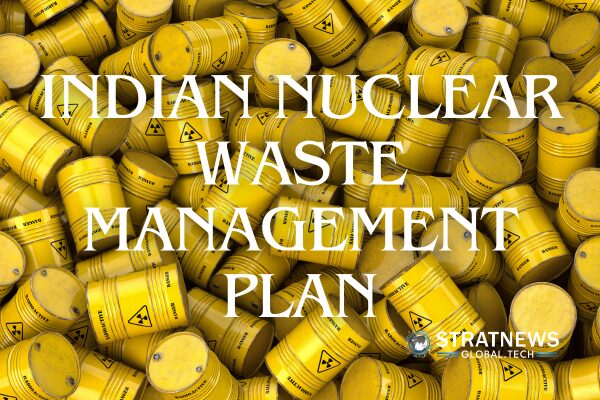India Outlines Nuclear Waste Management Plan for 100 GW Expansion by 2047
The Government of India has reaffirmed that the planned expansion of nuclear power capacity to 100 GW by 2047 will be supported by a robust nuclear waste management plan. The system will continue to follow international best practices and the safety standards prescribed under Indian law.
Current Practices in Nuclear Waste Management
Nuclear waste generated from power plants and fuel cycle facilities is managed under The Atomic Energy Act, 1962 and the Atomic Energy (Safe Disposal of Radioactive Wastes) Rules, 1987. No waste is released into the environment unless cleared, exempted, or excluded by regulation.
Most radioactive waste produced in India is of low and intermediate activity. Such waste is managed at the plant site itself through treatment, compaction, and immobilisation in materials like cement. It is then stored in reinforced concrete trenches and tile holes designed for long-term safety.
These facilities are monitored continuously through bore-wells and soil sampling to ensure no leakage into groundwater or surrounding soil. This approach is aligned with guidelines of the International Atomic Energy Agency (IAEA).
High-Level Waste and Reprocessing
India follows a closed nuclear fuel cycle, where spent fuel is reprocessed to recover usable fissile material. This reduces the overall burden of waste management. High-level waste from reprocessing is vitrified into an inert glass matrix and stored in Solid Storage Surveillance Facilities for safe interim storage, in line with global standards.
Research is ongoing into partitioning technologies that could recover long-lived radioactive elements, extract useful isotopes for industrial and medical use, and reduce waste volume. Work is also underway to develop technologies that can incinerate long-lived actinides, potentially eliminating the need for long-term disposal in the future.
Roadmap to 100 GW and Funding Mechanism
Following the Budget 2025–26 announcement, a roadmap for achieving 100 GW of nuclear power capacity by 2047 has been prepared. This includes legal, regulatory, and technological reforms in areas such as spent fuel reprocessing and waste management.
The Nuclear Energy Mission, launched with an initial outlay of ₹20,000 crore for developing Small Modular Reactors (SMRs), is a critical part of this expansion. However, the overall mission will require significant financial resources. Along with extra-budgetary support, private investment will play a role.
Importantly, nuclear energy has been recognised under India’s Climate Finance Taxonomy (Draft) as part of climate action. This recognition will make nuclear projects eligible for climate-linked funding, helping ease the financial burden of expanding nuclear infrastructure.
With these measures, India aims to balance its ambitious nuclear expansion with safe, sustainable, and internationally compliant waste management practices.


